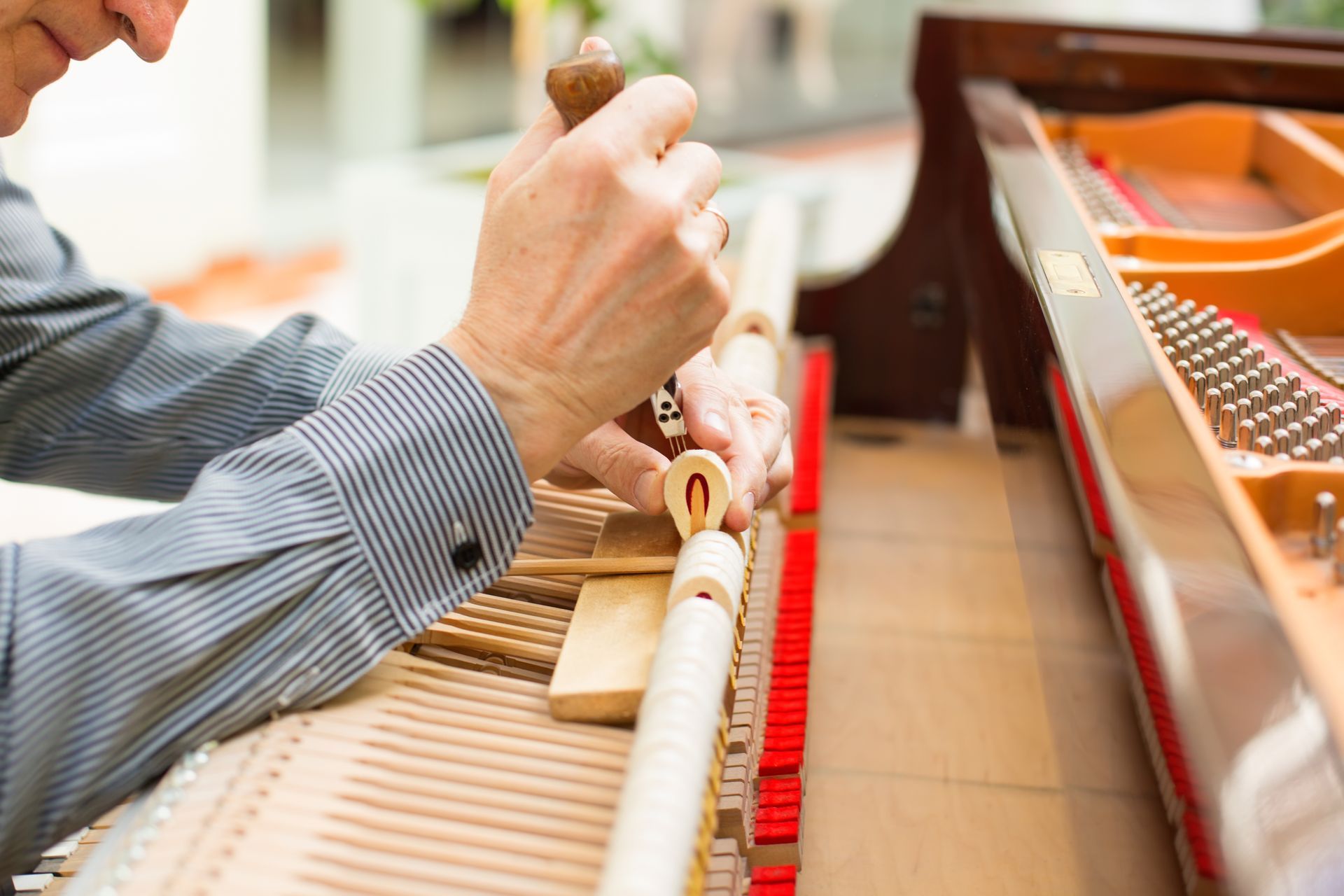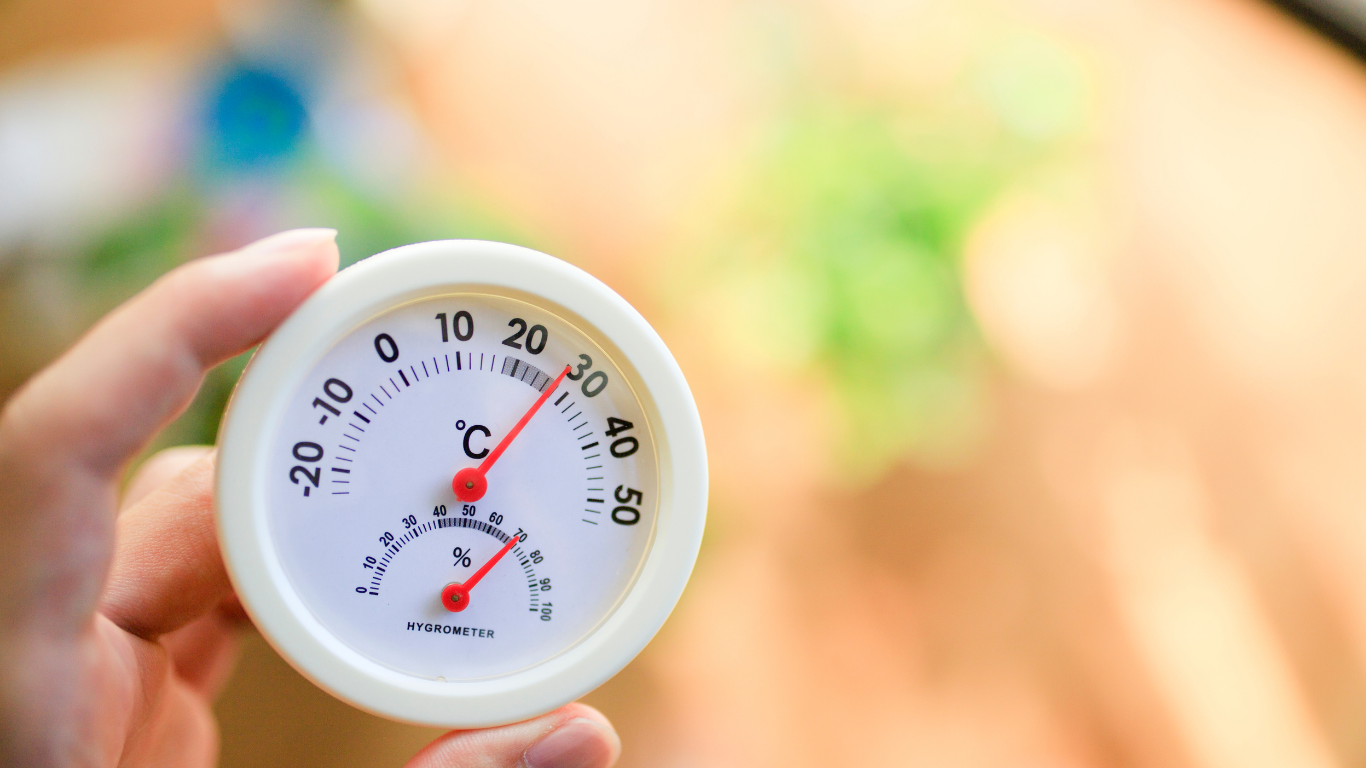How Humidity Affects Piano Tuning (And What You Can Do)
Wisconsin’s seasons are beautiful—but your piano might disagree.
Your piano is a finely tuned machine, but it’s also made largely of wood, felt, and metal—materials that are extremely sensitive to changes in humidity. If you’ve ever noticed your piano going out of tune quickly, or your keys becoming sticky or sluggish, chances are humidity is playing a big role.

What Is Piano Tuning?
Tuning is the process of adjusting the tension of each of the piano’s strings so that they vibrate at the correct frequency, typically based on A440 concert pitch. There are over 230 strings inside most pianos, and each one is under significant tension—when even a few go out of balance, the entire instrument can sound off.
Tuning is necessary because:
- Seasonal humidity affects string tension and pitch
- Pianos go out of tune just from sitting, even if not played
- Playing the piano gradually knocks it out of pitch alignment
A well-tuned piano has clear, clean intervals and smooth, even tone across all registers.
What Is Voicing?
Voicing refers to adjusting the tone quality of your piano. Even if every note is in tune, the tone can be harsh, dull, uneven, or unpleasant due to how the hammers strike the strings.
Over time, hammer felts become compacted or grooved from repeated impact. This changes the sound each note produces—some notes might be brighter, others muffled. Voicing reshapes the felt or alters its density to create a more balanced and pleasing tone.
Voicing can:
- Reduce harshness or brightness
- Increase warmth or clarity
- Match tone to your room’s acoustics
- Ensure evenness from bass to treble
- Personalize the piano’s sound to your taste
Voicing is especially useful for musicians, recording artists, and churches looking for consistency in tone and dynamics.
What Is Regulation?
Regulation refers to adjusting the piano’s internal action—the intricate system of levers, hammers, and dampers that make each key press create a sound.
When a piano is not regulated, it may feel:
- Uneven (some keys stiffer or lighter)
- Sluggish or slow to return
- Inconsistent in key depth or height
- Unresponsive when playing fast passages
- Prone to missed or double-struck notes
Regulation includes over dozens of precise adjustments to align everything mechanically. This is essential not just for playability, but for ensuring that expression, volume, and repetition are possible.
When Do You Need Each?
| Service | What It Fixes | How Often |
|---|---|---|
| Tuning | Notes that sound flat or sharp | Every 6–12 months |
| Voicing | Uneven or unpleasant tone | Every 1–3 years |
| Regulation | Keys that feel unresponsive or uneven | Every 5–10 years (or as needed) |
If your piano doesn’t feel enjoyable to play or doesn’t sound as it should—even when it’s in tune—it’s time to consider voicing or regulation.
How I Help You Decide
When I service a piano, I don’t just show up, tune, and leave. I listen to your piano—and to you. If I notice tonal unevenness, mechanical issues, or signs of wear, I’ll let you know and walk you through what I’m hearing and feeling. Most importantly, I give honest advice about what’s necessary and what can wait.
Even small adjustments can drastically improve your piano’s sound and responsiveness. Whether you play every day or just occasionally, you deserve an instrument that inspires.





